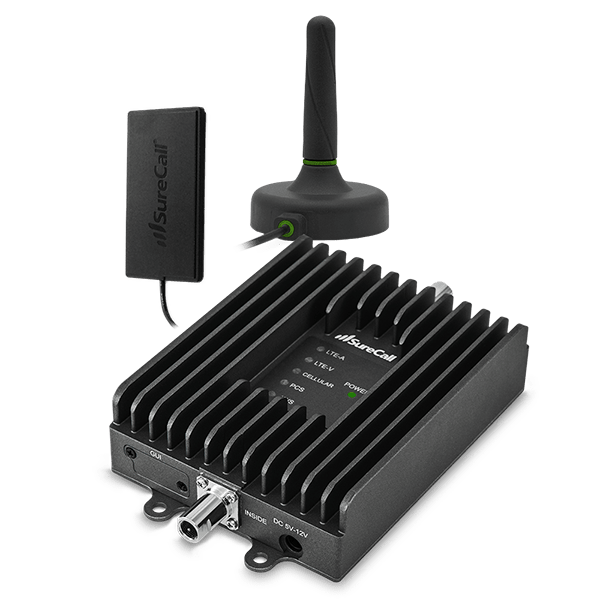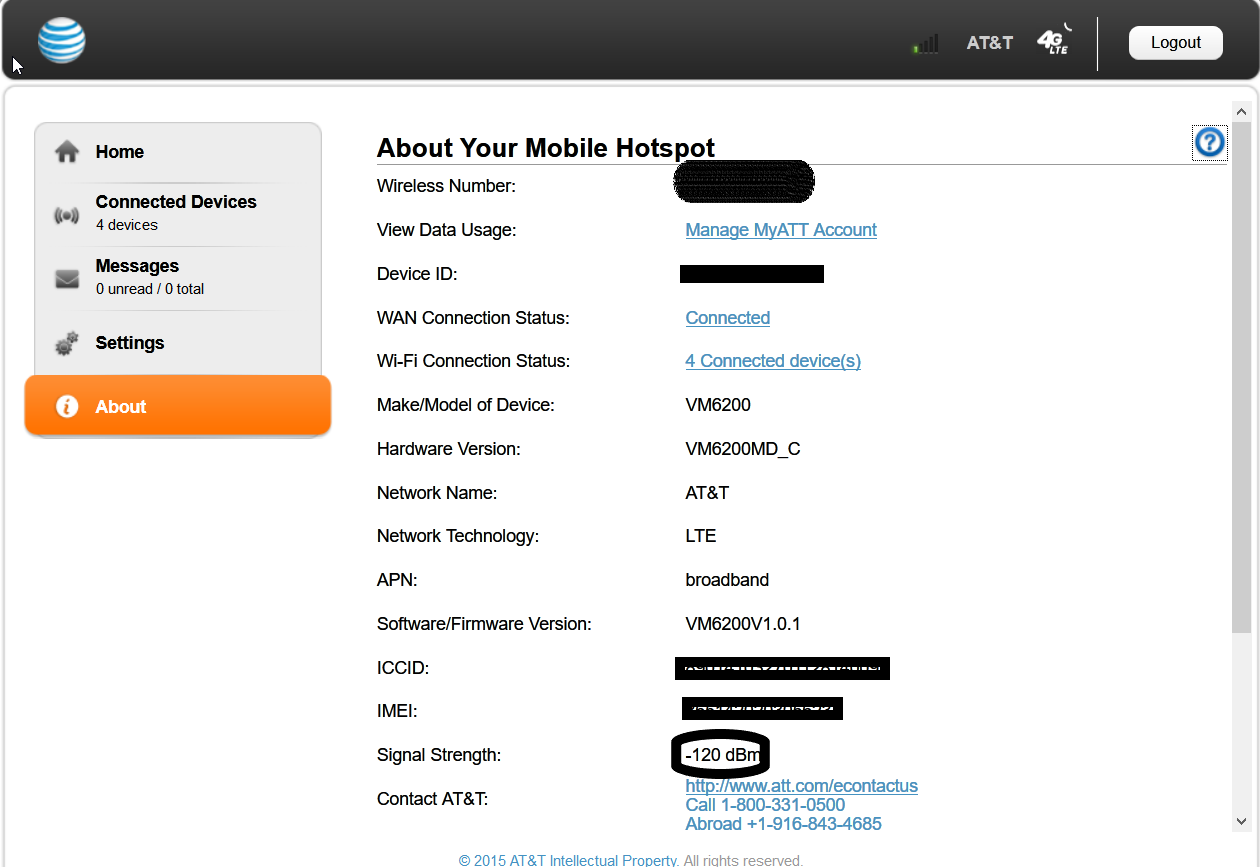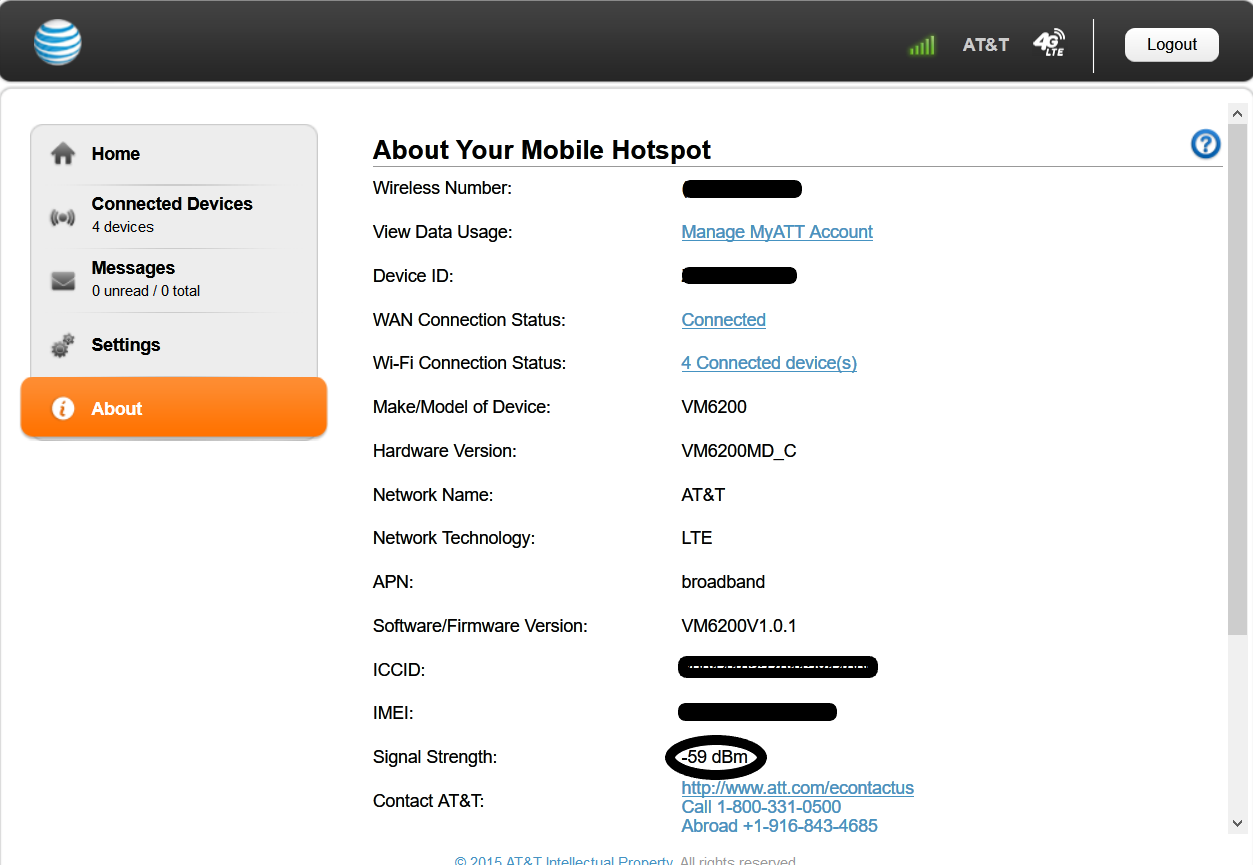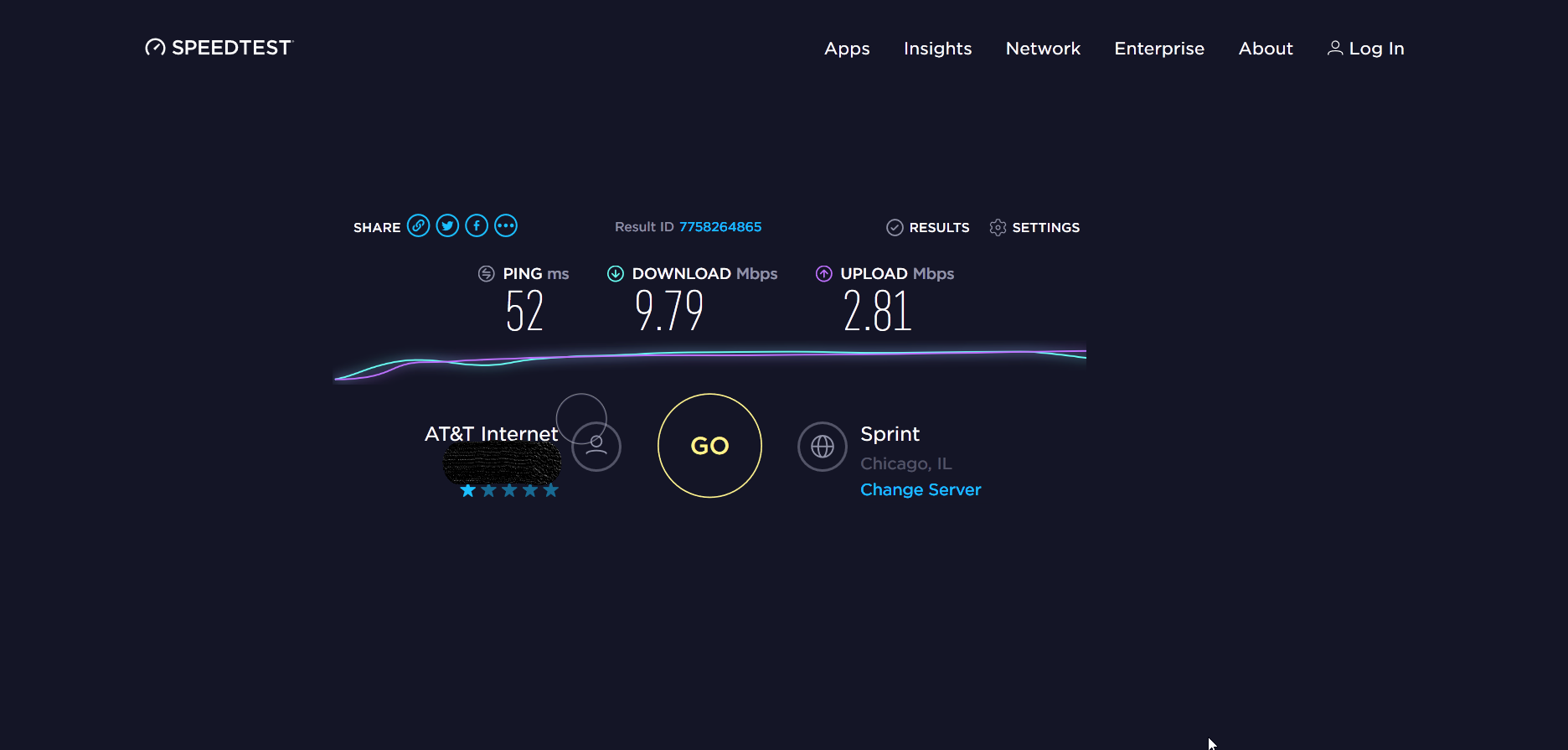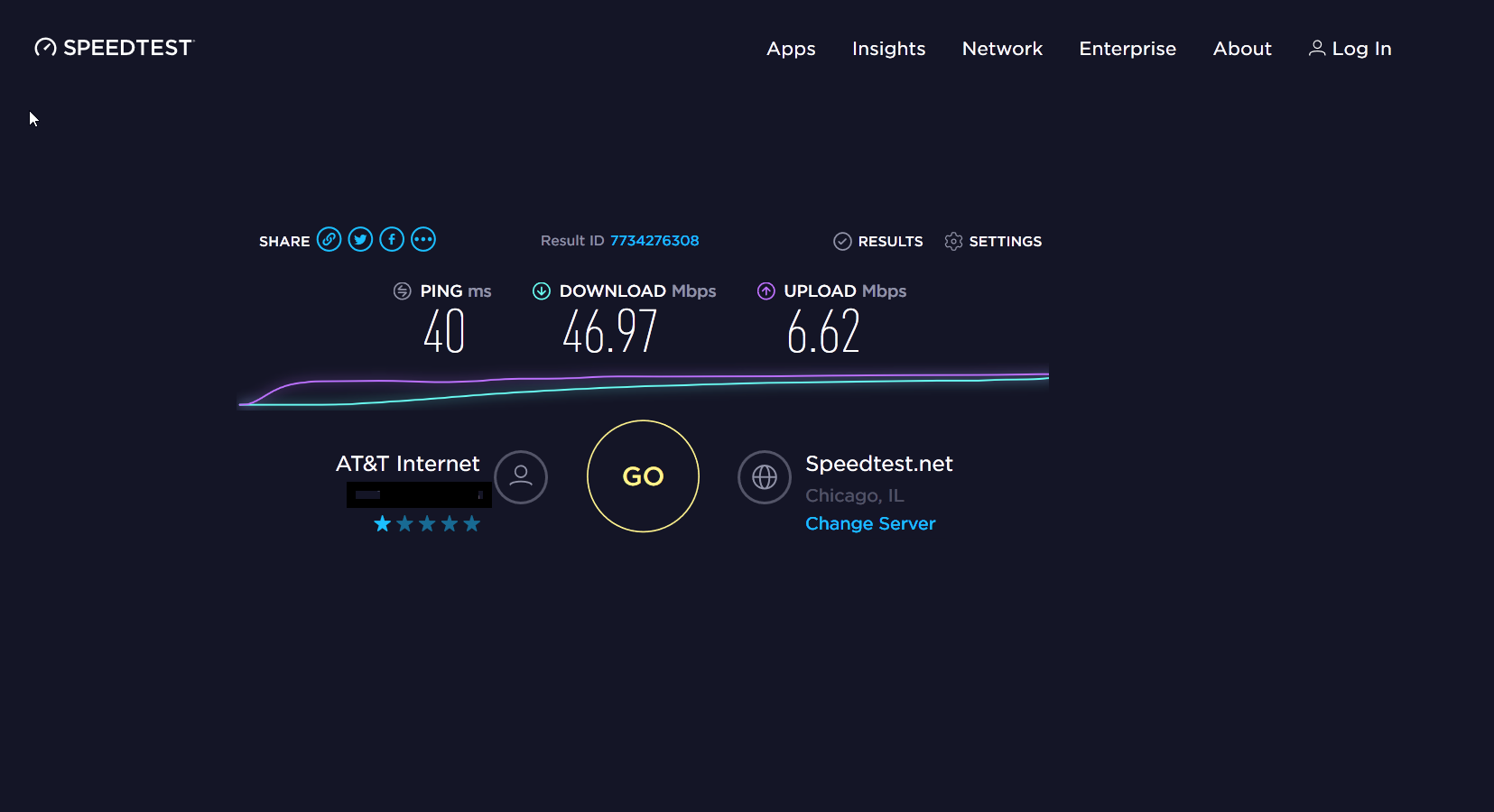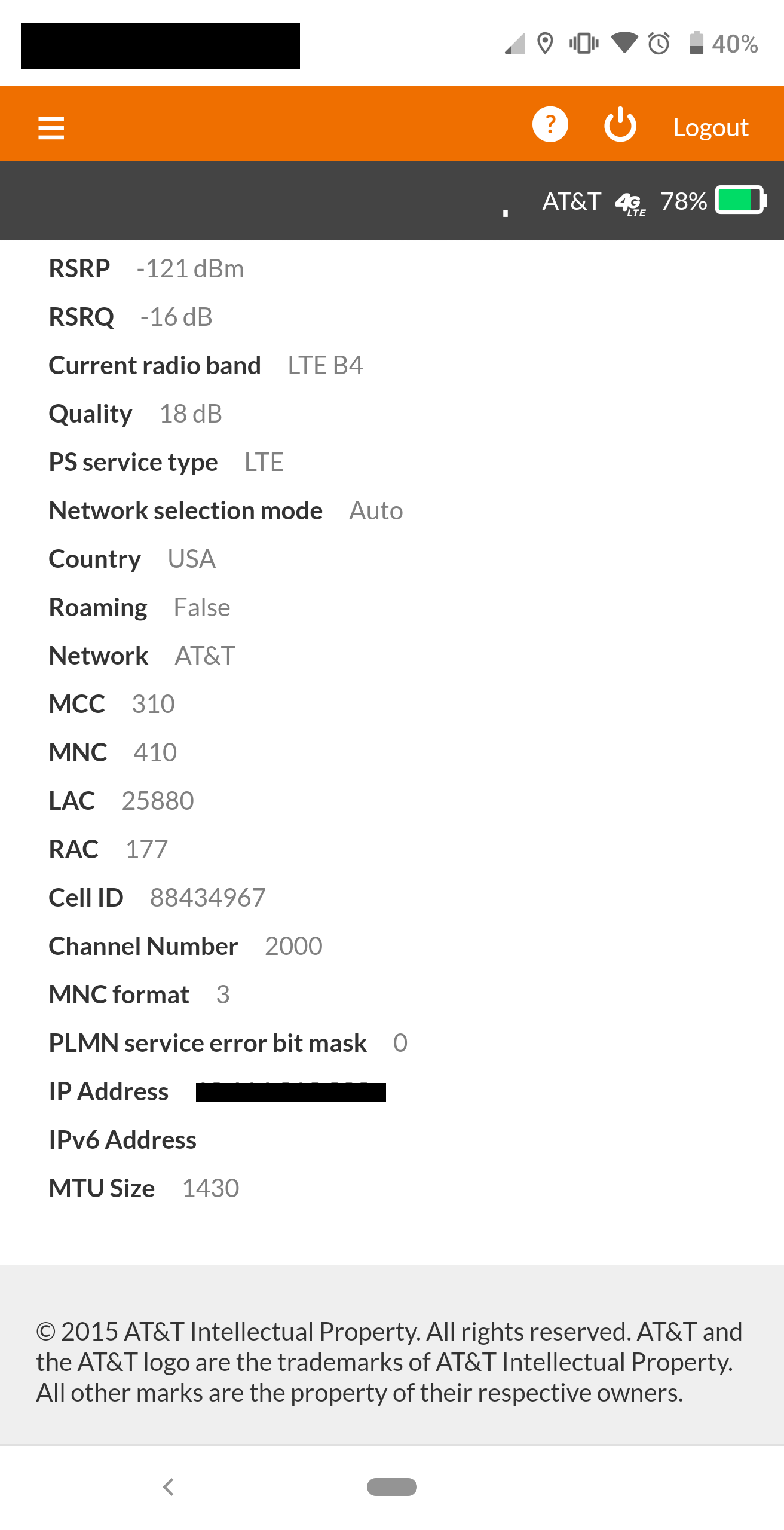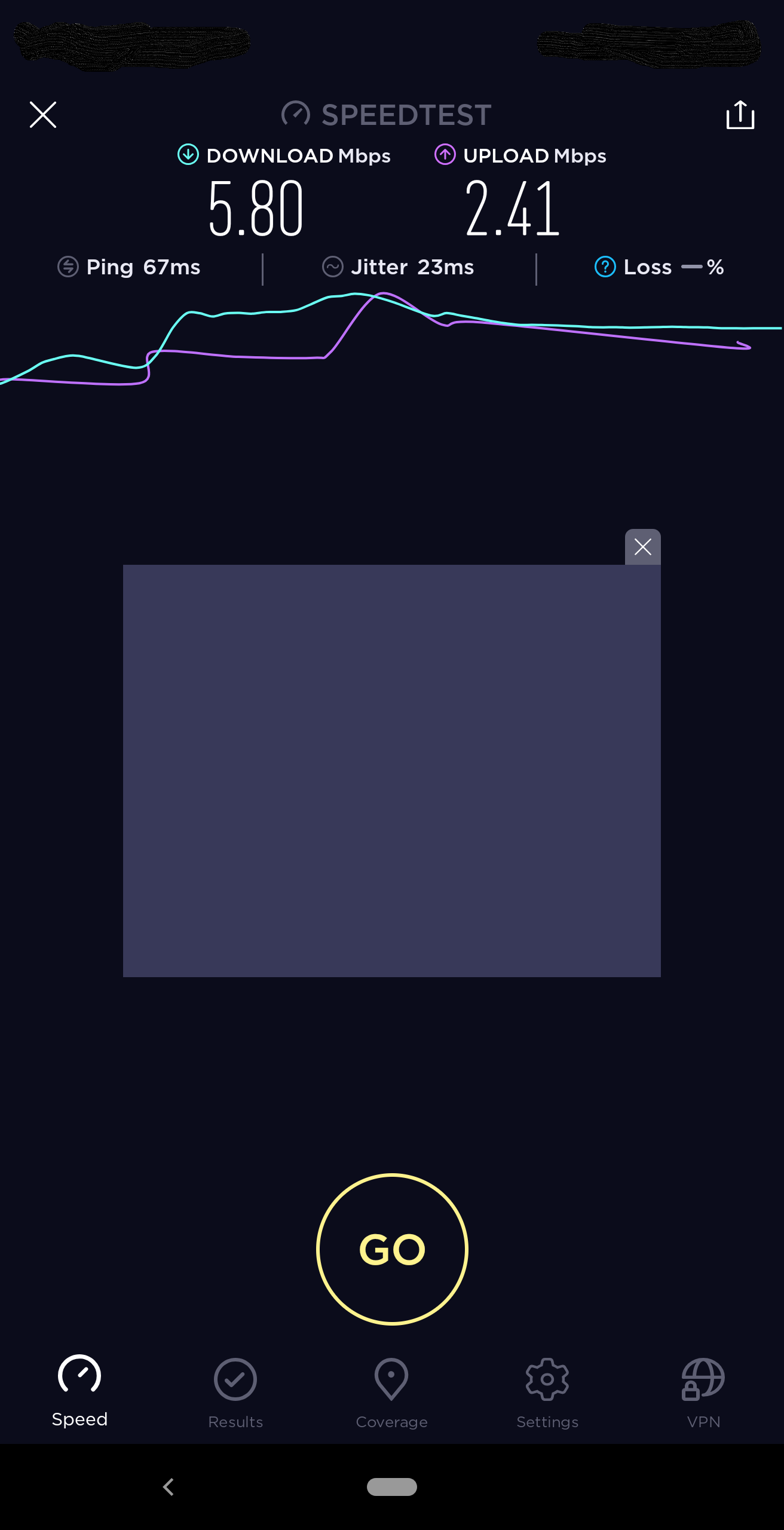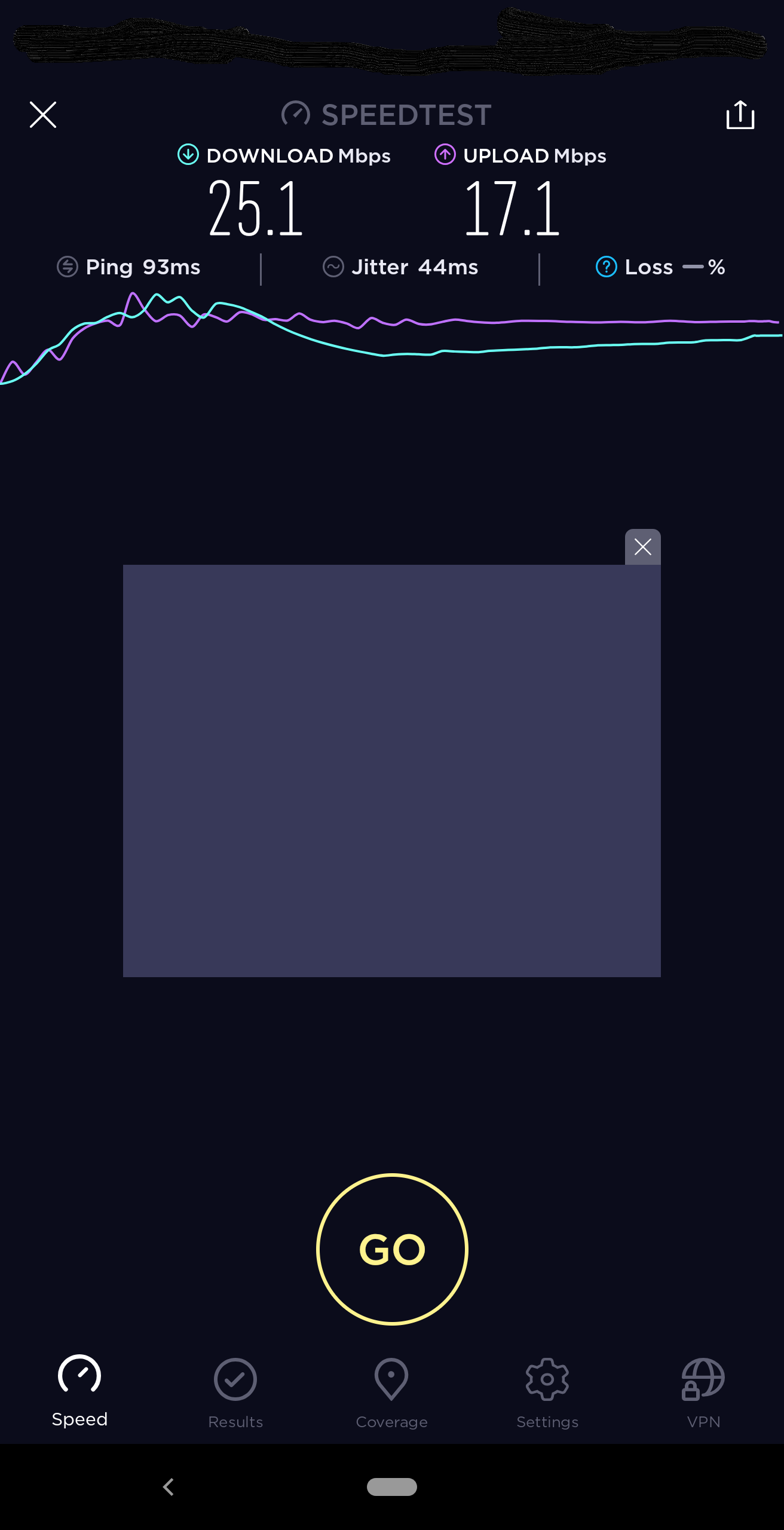Just when we thought that SureCall had made one of the best cellular amps on the market today, the have done it again with the SureCall Fusion2GO 3.0. Last year we were fortunate to review the SureCall Fusion2GO 2.0 unit. This was again a major improvement over the already much improved SureCall Fusion2GO cell amp. The Fusion2GO 3.0 is a refinement of their past two versions of the Fusion2Go line of amps.
The Fusion2GO 3.0 is physically similar to the 2.0 unit but is about a 1/3 less the size of the 2.0 version. Visually, it still has the indicator lamps to indicate what bands are currently being used/boosted. This unit also seems to handle oscillation better still than the 2.0 version as the boost up time seems to be much longer as well. The unit utilizes the same internal patch antenna and external antenna as the 2.0 unit.
Below are some of the screenshots using my AT&T hotspot webgui.
This is a sample before the booster is used.
This is the signal with the booster active.
As you can see, the booster significantly boosted my signal. This is a drastic improvement in signal compared with no boost at all.
This also provided a significant boost in my download speeds as well as shown below.
Speeds without the booster on.
Speeds with the booster on.
As you can see, with the booster on, the speed improvement was just as dramatic as the boost in the signal as well.
Below are the specs of the SureCall Fusion2GO 3.0 unit from their website.
| Uplink Frequency Range (MHz): | 698-716 / 776-787 / 824-849 / 1850-1915 / 1710-1755 (G Block Included) |
| Downlink Frequency Range (MHz): | 728-746 / 746-757 / 869-894 / 1930-1995 / 2110-2155 (G Block Included) |
| Supported Standards: | CDMA, WCDMA, GSM, EDGE, HSPA+, EVDO, LTE and all cellular standards |
| Input/Output Impedance: | 50 Ohm |
| Maximum Gain: | 50 dB |
| Noise Figure: | ≤5 dB |
| VSWR: | ≤2.0 |
| Gain Adjustment: | 20 dB (Automatic) |
| DC Car Charger: | 6-15V |
| Maximum Output Power: | 1 Watt EIRP |
| Exterior Antenna Cable Type / Length: | RG-302 / 10 feet |
| Interior Antenna Cable Type / Length: | RG-174 / 10 feet |
| RF Connectors: | FME Male (both ends) |
| Power Consumption: | <10W |
| Dimensions: | 5.625″ x 4″ x 1.125″ |
| Weight: | 1.43 lbs |
The SureCall Fusion2GO is an excellent choice for a mobile booster. As with any mobile booster, separation of the internal and external antennas is critical for proper operation of the unit. In my experience, this is where most people have problems is because they do not have the proper separation between the antennas. I have tested this unit throughout the 2018 storm chasing season from Texas to the prairies of Canada and this has been the most reliable and “hands-off” booster that I have used. Simply put, it just works with little interaction needed from the end user.
We also have tested this season the SureCall Fusion4Home cellular booster. This booster consists of the boost unit, a yagi directional outside antenna, 50′ of RG-6 cable and the inside panel antenna. The booster unit works very similar to the mobile unit with the home unit boosting to -71db on the AWS band and the max boost of the mobile unit around -50db. Installation of the home unit was very simple with mounting the antenna pointed to the nearest cell tower. There are several apps out there that will help you to locate your nearest cell site for your particular provider. The internal antenna was mounted in a 2o’ x 20′ room. This provided plenty of boost for all 4 major carriers that we run. Some examples of the tests are below.
Signal strength without the booster inactive.
Signal strength with the booster active.
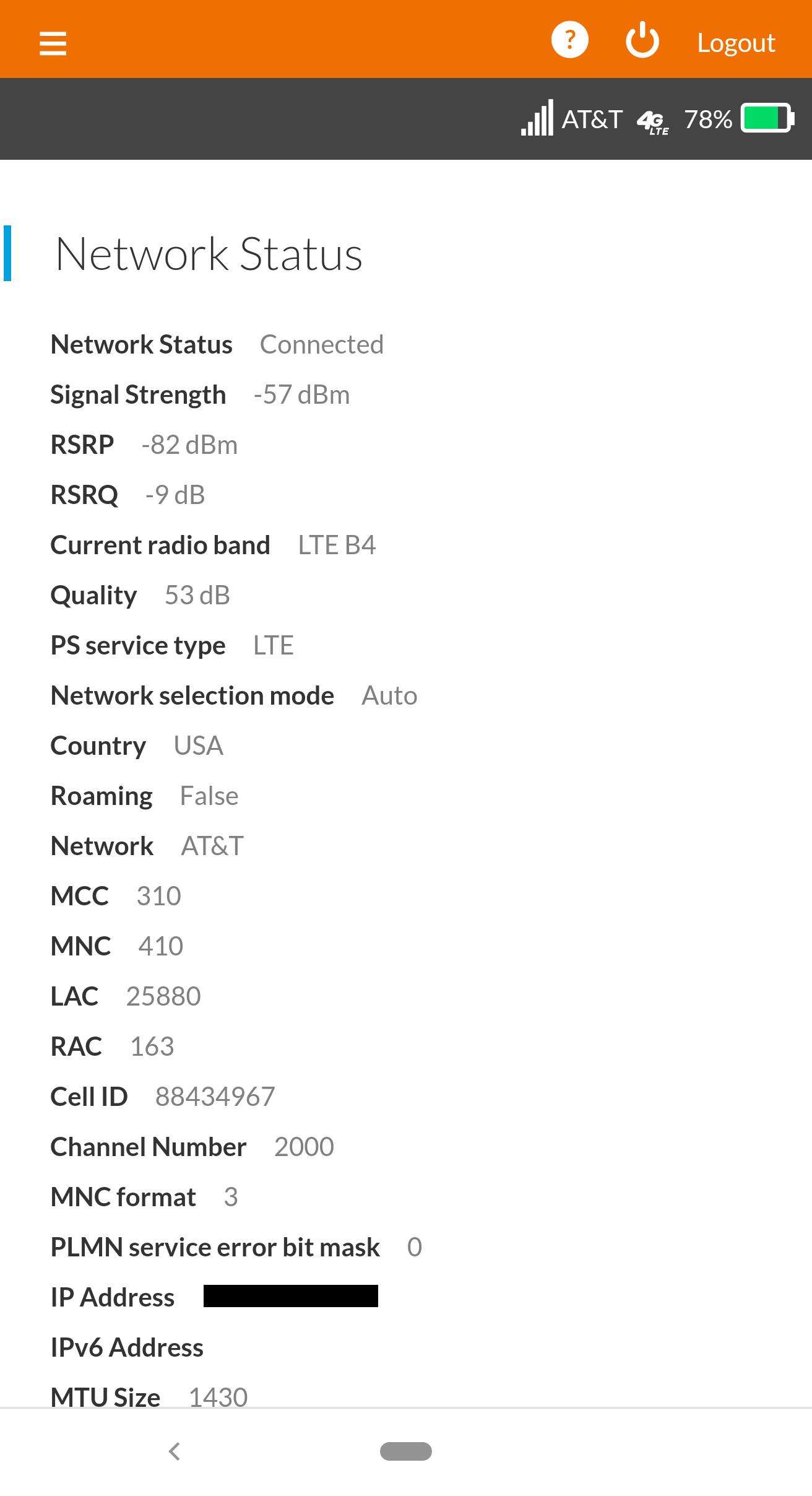 Speeds with the booster inactive.
Speeds with the booster inactive.
Speeds with the booster active.
Product Specifications
| Uplink Frequency Range (MHz): | 698-716 / 776-787 / 824-849 / 1850-1915 / 1710-1755 (G Block Included) |
| Downlink Frequency Range (MHz): | 728-746 / 746-757 / 869-894 / 1930-1995 / 2110-2155 (G Block Included) |
| Supported Standards: | CDMA, WCDMA, GSM, EDGE, HSPA+, EVDO, LTE and all cellular standards |
| Input/Output Impedance: | 75 Ohm Donor Port / 50 Ohm Server Port |
| Maximum Gain: | Cellular – 65 dB / PCS – 72 dB / LTE(A) – 63.5 dB / LTE(V) – 64 dB / AWS – 71 dB |
| Noise Figure: | 8 dB |
| VSWR: | ≤2.0 |
| AC Power Transmitter: | Input AC 110 V, 60 Hz / Output DC 5-15 V |
| Maximum Output Power: | 1 Watt EIRP |
| Cable: | RG-6 / SC-240 |
| RF Connectors: | F-Female (Outdoor) / N-Female (Indoor) |
| Power Consumption: | <15W |
| Dimensions: | 7.875″ x 5″ x 1.188″ |
| Weight: | 2 lb. 3 oz. |
**These tests were performed in a rural area so speeds did not exceed much more than 25 Mbps.
As you can see, the SureCall Fusion4Home is an excellent choice for those areas that are “signal challenged”. This was in a metal building which does not allow cellular signals to enter it. This booster was a dramatic increase in signal and speed to allow us to have communications with other storm chasers/media. This unit is perfect for those that needs a booster that “just works” with no user input to keep the boosted signal working.
I highly recommend both of these units. These boosters can be found at the links below.
https://www.surecall.com/signal-booster/vehicle/FUSION2GO-3/
https://www.surecall.com/signal-booster/home-office/FUSION4HOME/
Steve Polley is a 15 year storm chaser and also the owner of MesoExtreme Media Productions LLC. His interest in severe weather began at an early age of seven when a grain bin partially collapsed a truck that he was sitting in. Since then, he has been fascinated with all facets of severe weather from large hail and tornadoes, to ice and snow storms. Steve is also a storm chaser for KWCH-TV in Wichita, KS and KKTV-TV in Colorado Springs, Colorado. You can also follow Steve @stormchaseguy on Twitter. Steve’s work has been featured on many local and national media outlets such as the Weather Channel, Good Morning America, CBS This Morning, CNN, KAKE-TV, KSNT-TV, KQTV, KWCH and KKTV.

